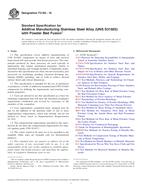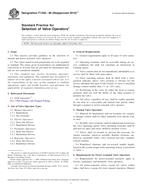1.1 This practice is intended for determining volatile organic compound (VOC) emissions from materials and products using emission cells. It can be applied in principle to most construction materials and many products used indoors. Objectives include:
1.1.1 To provide manufacturers, builders, and end users with emission data useful for evaluating the impact of building products, new or old, on indoor air concentrations in a model room.
1.1.2 To promote the development of products with lower VOC emissions.
1.2 This practice is for identifying emitted VOCs and for determining the area specific emission rate of VOCs from newly produced building products under defined climate conditions. The method can also be applied to aged products.
1.3 In accordance with the definition of an emission cell, it is also possible to perform nondestructive emission measurements on building products on-site in buildings. However, the procedure for such measurements is not described in this standard.
1.4 This practice describes the design, construction, performance evaluation and use of emission cells for VOC emission testing. Sampling, transport and storage of materials to be tested, and preparation of test specimens are also described.
1.5 Air sampling and analytical methods for the determination of VOCs are described in Practice D 6196. Alternative sampling and analytical approaches for formaldehyde and other carbonyls are described in Test Method D 5197.
Note 1 – All volatile (vapor-phase) carbonyls except formaldehyde can be analyzed by either Practice D 6196 or by Test Method D 5197.
Note 2 – Direct-reading instruments can also be applied for specific objectives.
Note 3 – Some volatile inorganic compounds can, in principle, also be analyzed (for example, ammonia).
1.6 An example of an emission cell is described in Appendix X2 of this practice.
Product Details
- Published:
- 03/01/2005
- Number of Pages:
- 20
- File Size:
- 1 file , 260 KB


